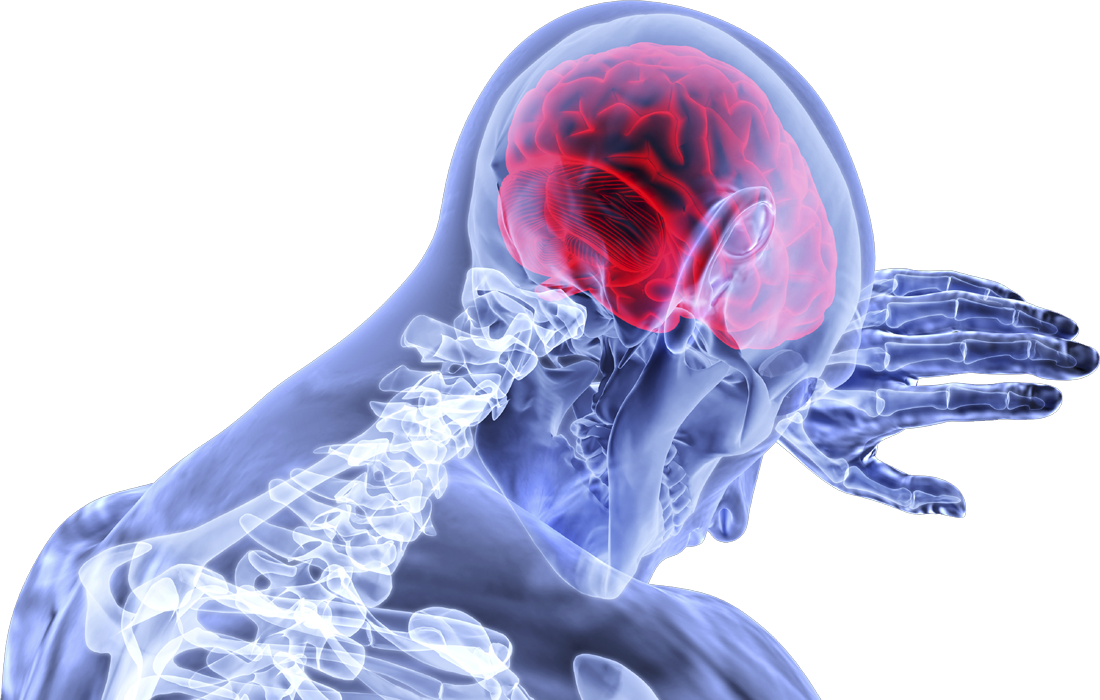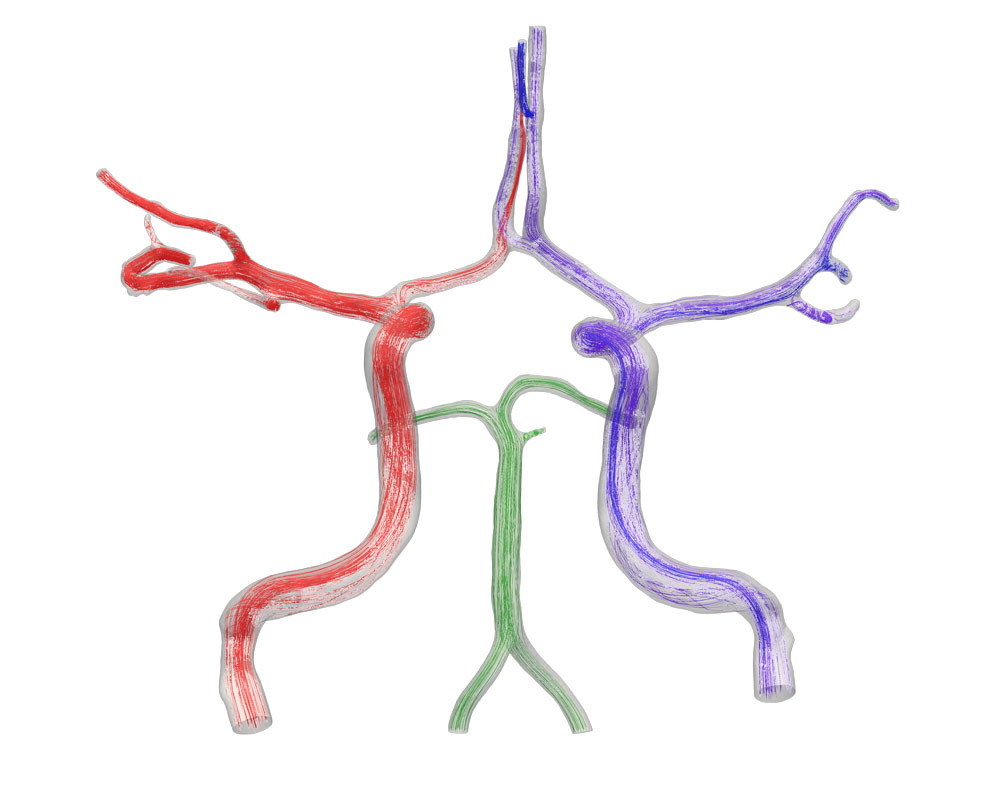Stroke simulation

By means of new numerical methods (e.g. Fluid-Structure interaction) and considering the patient specific data and also the modeling of the blood flow blood in the circle of Willis, we can precisely calculate various medical phenomena of the brain cerebral circulation. Therefore, the focus of our services is on the numerical calculations of the hemodynamics of the blood flow as well as arterial wall behavior in circle of Willis. We use the finite-volume-method to model blood flow in the brain using advanced material models. We can model and analyze various patient-specific boundary conditions for both fluid and the structure. Our solver can simulate arteries that are surrounded by either brain tissue or cerebrospinal fluid (CSF).
Ischemic stroke
About 85% of stroke cases are listed as ischemic stroke. They are caused when blood supply into the brain is reduced or interrupted completely. Any reduction in delivering oxygenized blood and nutrients into the brain makes the brain cells to start dying in a few minutes. That is why a stroke is referred to as a medical emergency. The sooner necessary actions are taken, the less are the damages applied to the brain and therefore the less are the complications of stroke. Using our patient-specific simulations, such problems can be found and analyzed before they lead to a stroke.

Hemorrhagic stroke
The second type of brain stroke is the hemorrhagic stroke. This kind of stroke happens when a blood vessel bursts and blood flows outside of its path. This occurs either in the arteries located in the fluid surrounding the brain called Cerebrospinal Fluid (CSF), or even in the smaller arteries within the tissue of the brain. The former is called “Subarachnoid Hemorrhage” (SAH) and the latter “Intracerebral Hemorrhage” (ICH). We can simulate both cases and study the critical spots for hemorrhagic stroke.


